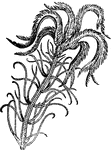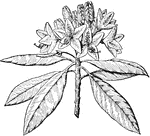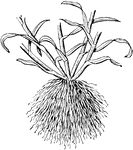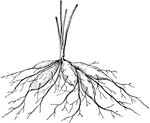
Seymour's Fan
"Mr. Seymour's form approaches more nearly to the French method than any other practised in England,…
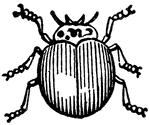
Ladybug
"Lady-bird beetles, or "lady bugs." These beetles are very destructive to plant lice." — Goff,…

Ladybug
"Lady-bird beetles, or "lady bugs." These beetles are very destructive to plant lice." — Goff,…

Ladybug
"Lady-bird beetles, or "lady bugs." These beetles are very destructive to plant lice." — Goff,…
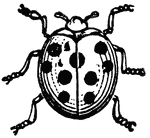
Ladybug
"Lady-bird beetles, or "lady bugs." These beetles are very destructive to plant lice." — Goff,…

American Aloe
Stiff plants with large, thick leaves. It is said to have medicinal purposes for burned or damaged skin.

Fucus Vesiculosus
"Fucus vesiculosus: showing the receptacles of the fructification a, a, at the ends of the branching…

Aloe
"A drug of great antiquity, for we find Dioscorides make mention of aloe as a substance obtained from…
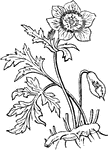
Anemone Coronaria
"A genus of plants of the natural order Ranunculaceae, having an involucre of three divided leaves,…

Angelica
"A genus of plants of the natural order Umbelliferae, by some botanists divided into two: A., and Archangelica.…

Arachis
"A genus of plants of the natural order Leguminosae, sub-order Papilionaceae, natives of the warm parts…

Arracacha
"A plant of the natural order Umbelliefrae, a native of the elevated table-lands in the neighborhood…
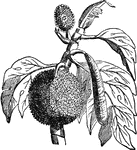
Bread-fruit
"Artocarpaceae, a natural order of Dicotyledonous plants, of which the Bread-fruit is the type; very…
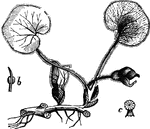
Asarabacca
"A plant of the natural order Aristolochiaceae, a native of Europe, growing in woods; rare, and perhaps…

Astragalus
"A genus of plans of the natural order Leguminosae, sub-order Papilionaceae. The pod is more or less…

Auricula
"A plant of the same genus with the Primrose, much cultivated in flower-gardens. The Auricula has long…

Balm
"An erect, branching perennial, herbaceous plant of the natural order Labiatae, a native of the south…
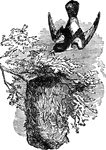
Oriole
"A very beautiful American, bird, found in all parts of the United States, and as far north as 55 degrees…

Basil
"A genus of plants of the natural order Labiatae. The species are all natives of the tropics, or of…

Batatas
"A perennial plant with long creeping stems, heart-shaped leaves on long stalks, and variously lobed,…

Chub
"A fish of the family Cyprinidae, of the same genus with the roach, dace, bleak and minnow. The color…

Rock-Rose
"A genus of exogenous plants, which gives its name to the natural order Cistaceae; an order allied to…

Contrayerva
"A medicine once in much repute against low fevers, and as a mild stimulant and diaphoretic, and still…
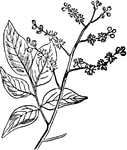
Copaiva Tree
"A valuable medicinal substance, consisting chiefly of a resin (Resin of Copaiva) and a volatile oil…

Cowslip
"A common native of pastures in England and many other parts of Europe, although rare in Scotland, a…

Cress
"A name given to many plants, of which the foliage has a pungent, mustard-like taste, and is used as…

Crowberry
"A small procumbent shrub, of the natural order Empetraceae, a native of the northern parts of the world,…
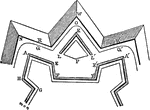
Curtain
"Curtain, in Fortification, is the portion of rampart or wall between two bastions or two gates. In…
Darnel
"A grass of the same genus with the valuable Ryegrass, an annual, common in the cornfields in England…

Date Palm
"A genus of palms, the most important species of which is the common Date Palm, the Palm Tree of Scripture,…

Stag Horns
"The annexed cut represents the horns of the stag at different ages. During the first year, there is…
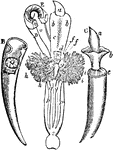
Dentalium
"Dentalium: B, the shell of Dentalium Entalis, broken longitudinally, showing the animal in a contracted…

Dewberry
"A plant of the same genus with the Bramble, and very nearly allied to it, but having weaker and more…
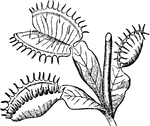
Dionaea
"A very curious and interesting genus of plants of the natural order Droseraceae, having a 5-partite…
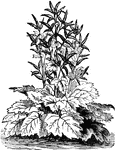
Medicinal Rhubarb
A perennial plant with many short red stems and green leaves. Commonly used in cooking.
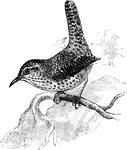
Rock Wren
A small bird having grey and brown upper parts with small black and white spots. Pale grey under parts…

Cup-adjusting Hub
"One end of the cup-adjusting hub, with inward bearings. The cones are formed of one piece with the…

Capsicum
"A genus of annual, subshrubby plants, order Solanaceae, with a wheel-shaped corolla, projecting and…
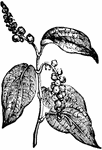
Black Pepper
"A genus of order Piperaceae. The Piper nigrum, which furnishes the black pepper of commerse, is a native…

Oyster
"Anatomy of the Oyster. A. Hinge or anterior umbonal end of the left valve of an adult oyster, upon…
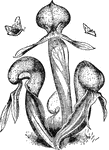
Darlingtonia
"Of the two forms of pitcher in this genus the larger and ordinary form, that of the adult plant, is…

Ipecacuanha Plant
"The root used in medicine under this name is obtained from Cephaelis Ipecacuanha, A. Rich, a small…
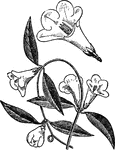
Gelsemium
"The plant known in America as the "Carolina jasmine" is not a true jasmine. other hardy species commonly…

Sandy Stratum
"A sandy stratum, a a, acting as a filter, occupies an inclined position between two other strata impervious…

Griffin Pendent
"A griffin having the uppet part of the body of an eagle and the lower parts of a lion, with wings decorated…
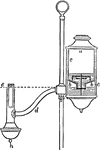
Reading Lamp
"An example of a form of reading lamp is seen here. The lamp is mounted on a standard on which it can…

Mechanic's Lathe
"A modern mechanic's lathe, has very different demands made upon it. For this the greatest possible…
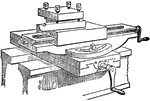
Slide-Rest
"A slide-rest such as would be used with the lathe in the previous engraving, for which purpose simplicity…


